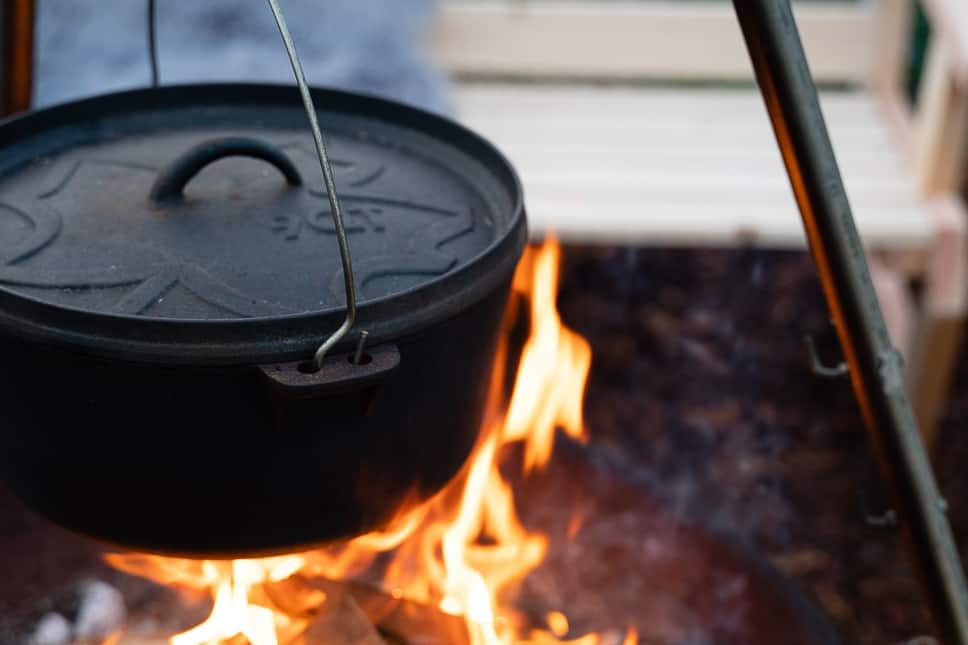Mastering the Art of French Bread Recipe in Dutch Oven: A Complete Guide
Written By James Morgan
There is something incredibly satisfying about making your own bread at home. It's not just the delicious smell that permeates your house or the unbeatable taste of freshly baked bread; it's also the sense of accomplishment that comes with perfecting a time-honored culinary technique. Today, we're delving deep into the art of making french bread recipe in dutch oven, focusing on creating the perfect Artisan French Bread with a golden crust and fluffy interior.

Why Use a Dutch Oven for Baking Bread
A Dutch oven is an incredibly versatile piece of cookware that is essential for anyone serious about bread-making. The heavy-duty nature of the Dutch oven allows it to retain and evenly distribute heat, which is crucial for baking bread. When you use a Dutch oven, you have a mini steam oven in which moisture released from the dough is trapped, creating the perfect environment for the crust to crisp up while keeping the inside soft and airy.

Getting Started: Ingredients and Preparation
Before we dive into the step-by-step guide to making french bread recipe in dutch oven, let's gather all the ingredients you'll need:
Ingredients:
- 500g Bread Flour
- 10g Salt
- 7g Instant Yeast
- 350ml Warm Water
- 1 tbsp Olive Oil (optional)

Step-by-Step Guide to Making French Bread in a Dutch Oven
Step 1: Activating the Yeast
Begin by activating your yeast. Place the instant yeast in a bowl with warm water (about 100F or 38C, which is warm but not hot to the touch). Let it sit for about 5 minutes. This will allow the yeast to activate and get ready to do its job in helping your bread rise.
Step 2: Mixing the Dough
In a large mixing bowl, combine the bread flour and salt. Gradually add the water-yeast mixture, stirring continuously. You can use a wooden spoon for this. Mix until the dough begins to come together into a ball. At this stage, you can add the olive oil if you'd like a slightly richer dough. Once combined, turn it out onto a floured surface.
Step 3: Kneading the Dough
This is perhaps the most labor-intensive part, but it's crucial for developing the gluten network that will give your bread its structure. Knead the dough vigorously for about 10 minutes. If you're new to kneading, you can find detailed instructions on various techniques online. The dough should become smooth and elastic by the end of this process.
Step 4: First Rise
Place the kneaded dough in a lightly oiled bowl, cover it with a damp cloth, and let it rise in a warm place for about 1 to 2 hours. The dough should double in size. This initial rise is essential for developing the flavor and texture of your bread.
Step 5: Shaping the Dough
Once your dough has doubled in size, turn it out onto a lightly floured surface and shape it into a long baguette or a round loaf, depending on your preference. Traditional French bread is usually shaped into a baguette, but feel free to experiment. Place the shaped dough onto a piece of parchment paper for easy transfer later.
Step 6: Preheating the Dutch Oven
While the dough is resting, preheat your Dutch oven in your kitchen oven at 450F (230C) for at least 30 minutes. This step is crucial because placing the dough into a hot Dutch oven will help develop that perfect, crispy crust.
Step 7: Second Rise
While your Dutch oven is preheating, let the shaped dough rise for another 30-40 minutes. This second rise is shorter but still important for the final texture of your French bread.
Step 8: Scoring the Dough
Using a sharp knife or a bread lame, make a few shallow slashes (about 1/4 inch deep) on the surface of the dough. This will allow the bread to expand properly as it bakes.
Step 9: Baking the Bread
Carefully remove the preheated Dutch oven from your kitchen oven and place the parchment paper with the dough inside it. Cover with the lid and bake for 30 minutes. Then, remove the lid and bake for an additional 15 minutes or until the crust is golden brown and the loaf sounds hollow when tapped.
Step 10: Cooling the Bread
Once your bread is done cooking, remove it from the Dutch oven and let it cool on a wire rack. Cooling is an essential step as it allows the moisture inside the bread to redistribute, giving you an evenly textured loaf.

Serving Suggestions and Storage Tips
Your french bread recipe in Dutch oven is now ready to be enjoyed. This bread is incredibly versatile and can be paired with a variety of dishes. From simple butter and jam to accompanying a hearty stew, the possibilities are endless.
Storage Tips:
- Room temperature: Store your bread in a paper bag or bread box for up to three days.
- Freezing: French bread freezes very well. Wrap it tightly in plastic wrap and place it in a freezer bag. It will keep for up to three months.
Tools and Equipment
Making great French bread at home doesn't require a lot of special equipment, but the right tools can make the process smoother. Here's what you'll need:
After baking, it's equally important to take care of your tools. Here are some cleaners that you might find useful:
For more bread-making inspiration, check out our Dutch Oven Bread and Gluten-Free Artisan Bread recipes. You'll find plenty of useful tips there to further refine your baking skills. As for keeping your Dutch oven in top shape, here's a helpful guide on cleaning a Dutch oven.
As an Amazon Associate, I earn from qualifying purchases.



